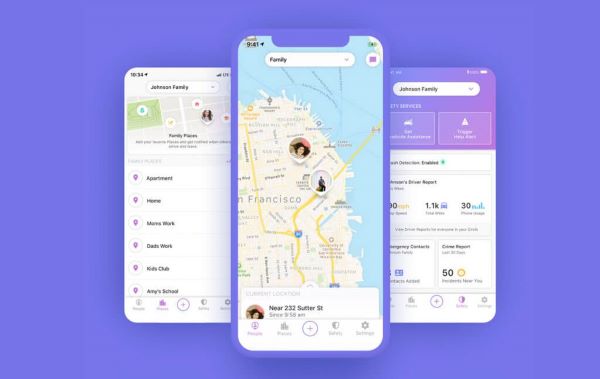Ads
Creativity is the driving force behind innovation and progress, which can ultimately change how people work. It is no wonder that many senior leadership teams are keen on integrating creativity into their workplaces as they recognize the numerous benefits it brings. Managers play a crucial role in fostering a creative work environment by understanding what creativity entails and how it can positively impact their teams. In this article, we will delve into the concept of workplace creativity, discuss 15 benefits that come with promoting creativity, and explore ways in which organizations can implement and nurture a creative culture.
Workplace creativity refers to the ability of employees at all levels to think outside the box, brainstorm new ideas, and explore innovations that can enhance productivity, profit margins, and overall growth for the organization. Companies that prioritize creativity are more likely to come up with groundbreaking ideas, innovative products, and unique services that set them apart in the market. Unlike traditional top-down industrial leadership styles that rely on strict instructions and protocols, leaders in creative organizations invest time and effort into fostering innovative thinking and approaches.
Here are 15 key benefits that come with promoting creativity in the workplace:
1. Enhanced team engagement: Creativity can help managers and leaders connect with their teams and keep them engaged in achieving corporate goals. This is especially important for remote workers who may feel isolated from the company culture, as creative possibilities can help them feel more connected and motivated.
2. Increased motivation: A creative workspace encourages employees to take ownership of their projects and tasks, leading to increased motivation and accountability. When team members feel empowered to solve problems and share ideas, they are more likely to be motivated to excel in their roles.
3. Business innovation: Fostering creativity within a company can lead to a wealth of innovative ideas that drive business success. Encouraging employees to think creatively allows them to explore various possibilities, gather data, and come up with unique solutions that can propel the company forward.
4. Leadership transformation: Creativity has the power to revitalize corporate culture and propel change. Managers and leaders can set the tone by empowering their teams to take initiative and make decisions that align with their expertise, which in turn boosts creativity and confidence among team members.
5. Personal growth: A creative approach to work can inspire professionals to learn new skills and acquire knowledge. By implementing new ideas and solutions, employees can gain valuable experience and advance their personal development through job assessments and objectives.
6. Increased workplace efficiency: Creative office cultures promote productivity through effective structure and management. Teams that embrace creativity can work collaboratively to implement innovative ideas and solutions, which in turn drives motivation and hard work among employees.
7. Creative problem-solving: A less formal work environment that fosters creativity can help teams tackle challenges with fresh perspectives and innovative solutions. By encouraging creative thinking, employees can come up with new methods to overcome obstacles and address difficulties using creative approaches.
8. Agile working: Creative thinking is essential for establishing agile work practices that enhance productivity and efficiency within an organization. By giving employees the freedom and flexibility to determine the best ways to complete tasks and collaborate, teams can take ownership of their work and drive success.
9. Cost-effective solutions: Creative workplaces are often able to generate innovative solutions that help organizations save money on outsourcing costs. By encouraging employees to develop and hone their skills, companies can keep marketing and consulting services in-house, thereby reducing expenses.
10. Resourceful teams: Creativity fosters resourcefulness within teams, as members find new ways to work and utilize their skills and capabilities to succeed. By encouraging workplace creativity, employees can quickly and cleverly solve problems and adapt to changing circumstances.
11. Employee well-being: Creativity in the workplace promotes employee wellness by giving them a platform to voice their ideas and thoughts, reducing workplace stress and fostering a supportive environment where team members can seek guidance and assistance.
12. Improved teamwork: Creativity encourages teamwork by facilitating knowledge sharing and collaboration among team members. When employees enjoy working together in a creative environment, they are more likely to embrace collaborative efforts and produce innovative results.
13. Enhanced customer service: Creative workplaces are better equipped to provide excellent customer service by enabling every department to focus on customer needs and expectations. By fostering workplace creativity, companies can enhance customer satisfaction and loyalty, ultimately increasing revenue.
14. Talent recruitment: Companies that foster a creative working culture are more likely to attract talented professionals looking to advance their careers in dynamic and innovative environments. By creating opportunities for employees to apply their skills and contribute to achieving company goals, organizations can enhance their performance and reputation.
15. Open communication: In a creative workplace that encourages experimentation, mistakes are viewed as learning opportunities rather than failures. When employees feel supported in taking creative risks and owning up to their mistakes, they are more likely to communicate openly and raise concerns, leading to a more collaborative and productive work environment.
In conclusion, workplace creativity is a powerful tool that can drive innovation, improve employee engagement, boost productivity, and ultimately lead to business success. By understanding the benefits of promoting creativity, organizations can implement strategies to nurture a creative culture that encourages experimentation, collaboration, and personal growth among employees. Through creative thinking and problem-solving, companies can stay ahead of the competition, adapt to changing market demands, and achieve long-term success in today’s fast-paced corporate environment.






